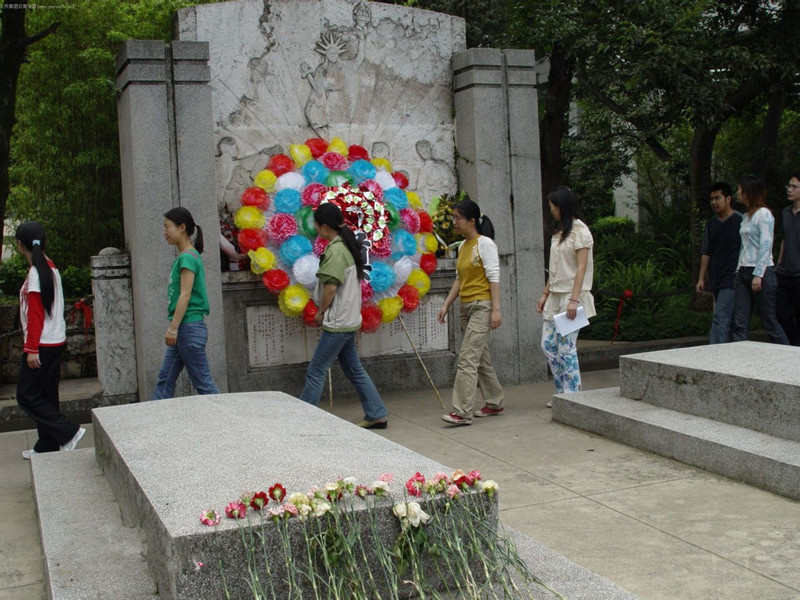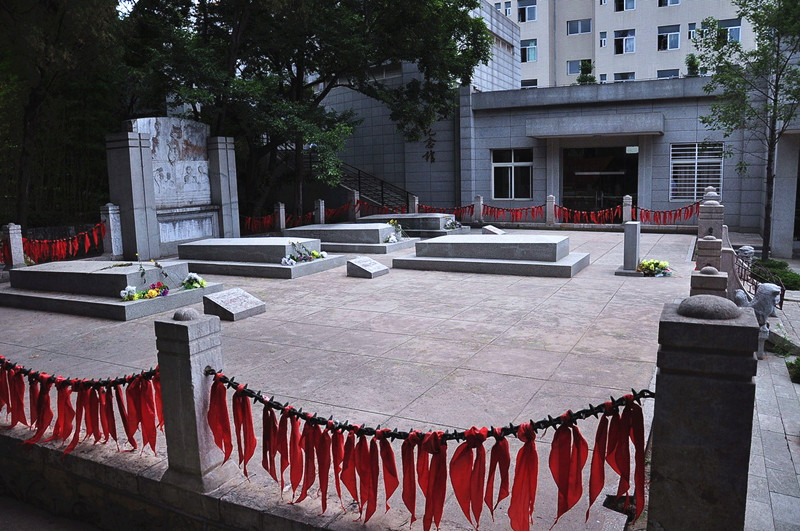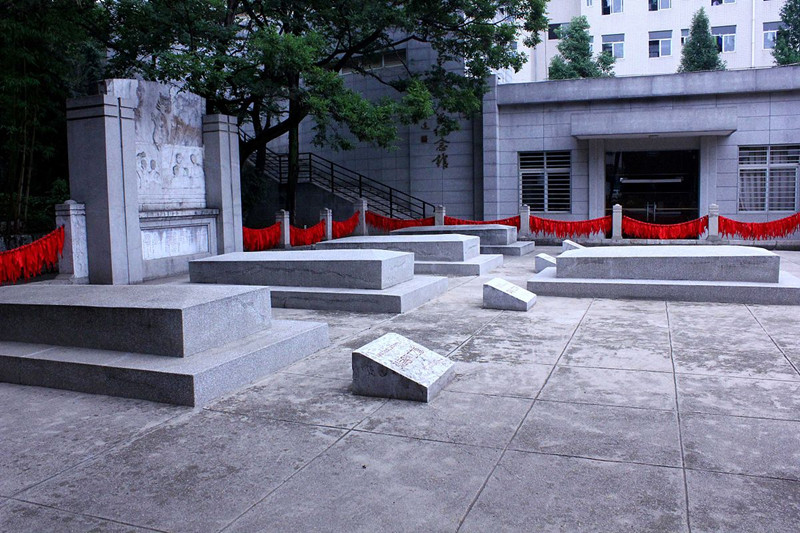Four Revolutionary Martyrs’ Cemetery of December 1st Movement in Kunming
The Four Revolutionary Martyrs’ Cemetery of December 1st Movement (一二·一四烈士墓) is located on the former site of the Southwest Associated University (西南联大), now part of Yunnan Normal University (云南师范大学) in Kunming, Yunnan Province, China. It was established to commemorate the four martyrs who sacrificed their lives during the December 1st Movement (一二·一运动) in 1945.
Location and Significance
- Location: Kunming, Yunnan Province, China
- Commemoration: The four martyrs who perished during the December 1st Movement
- Protection Level: Provincial Cultural Heritage Unit
Memorial Poem
In the northeastern corner of Yunnan Normal University, amidst bamboo and cypress trees, stands the Cemetery of the Four Martyrs of the December 1st Movement. Two stone pillars, topped with a bright red torch, rise in front of the grave pathway. Inscribed on the pedestal of these pillars is a record titled “The Beginning and End of the December 1st Movement” (一二·一运动始末记), written by Mr. Wen Yiduo (闻一多). Behind the cemetery is a stone relief depicting the Goddess of Liberty, with countless young people following her toward freedom, calling for light. Below this relief is an emotional memorial poem:
死者,你们什么时候回来?我们从来没有离开这里。
(The deceased, when will you return? We have never left here.)死者,你们怎么走不出来?我们在这里,你们不要悲哀。
(The deceased, why can’t you emerge? We are here; do not be sad.)我们在这里,你们抬起头来。
(We are here; lift your heads.)哪一个爱正义者的心上没有我们?
(Whose heart, loving justice, does not have us?)哪一个爱自由者的脑里没有我们?
(Whose mind, loving freedom, does not have us?)哪一个爱光明者的眼前看不见我们?
(Whose eyes, loving light, cannot see us?)
The martyrs’ cemetery is surrounded by an iron chain fence, creating a solemn atmosphere. Every year, thousands of people visit to pay their respects, with many youths coming here to sweep the graves and commemorate the martyrs.
The December 1st Movement
On August 15, 1945, Japanese imperialism surrendered unconditionally. Shortly after, Mao Zedong (毛泽东) visited Chongqing to discuss matters with Chiang Kai-shek (蒋介石). On October 10, the Kuomintang (KMT) and the Communist Party of China (CPC) signed the Double Tenth Agreement (双十协定). After eight years of resistance against Japan, the Chinese people yearned for recovery and reconstruction. However, the Kuomintang’s ruling faction, in a bid to cover their actions with peace negotiations, intentionally provoked a civil war against the Communist Party.
On October 3, Chiang Kai-shek used a surprise attack to force the resignation of Long Yun (龙云), the Chairman of Yunnan Province, and appointed Li Zonghuang (李宗黄), a core member of the CC faction, as the provincial party director and acting chairman, with Guan Linzheng (关麟征) as the commander of the garrison. Afterward, they publicly suppressed the democratic movement.
On November 25, over 600 students and citizens gathered at the Southwest Associated University for a social event, where Professors Qian Duansheng (钱端升), Wu Qiyuan (伍启元), Fei Xiaotong (费孝通), and Pan Dakui (潘大逵) delivered speeches against the civil war. The Kuomintang authorities dispatched military police and spies to create chaos and threaten attendees. They first cut the power lines, then sent spies to disrupt the meeting, and eventually surrounded the university with armed forces, intimidating the crowd with gunfire.
On November 26-28, 31 universities went on strike, forming a Joint Committee for the Strike and issuing a declaration demanding an end to the civil war, peace, and democracy. They opposed foreign intervention in China’s civil war and called for the withdrawal of American troops stationed in China. They also made four demands to the Yunnan provincial authorities: accountability for the shooting incident at the university, the lifting of the ban on assemblies and parades, no arrests of students, and an apology from the Central News Agency for spreading falsehoods.
In response, Chiang Kai-shek ordered Li Zonghuang to act decisively against the protestors. Consequently, military police violently attacked students promoting their cause and forced them to resume classes unconditionally.
On December 1, the Kuomintang authorities organized a large number of spies and soldiers, armed with weapons, to invade various educational institutions, including Yunnan University (云南大学), the Sino-French University (中法大学), and the affiliated schools of the Southwest Associated University and Nanjing High School (南菁中学). They not only tore down posters and damaged school property but also brutally assaulted unarmed students. Teacher Yu Zai (于再), a Communist Party member, was killed by a grenade in front of the new campus of the university. Students Pan Yan (潘琰, female, Communist Party member), Li Lulian (李鲁连), and Zhang Huachang (张华昌) from Kunming University of Technology (昆华工校) also fell to the ground amid grenade explosions, resulting in 25 severe injuries and over 30 minor injuries. This incident shocked the nation, marking the tragic December 1st Incident (一二·一惨案).
In the face of the oppressors’ violence, patriotic youth in Kunming did not retreat. Students from over 30 universities united in strikes, with over 100,000 citizens gathering in campuses to pay tribute to the martyrs. Supporters held rallies in Yan’an (延安), Chengdu (成都), Chongqing (重庆), and Shanghai (上海), and schools in Chuxiong (楚雄), Yuxi (玉溪), Mojiang (墨江), Xuanwei (宣威), and Zhaotong (昭通) responded in solidarity. The struggle achieved significant results, creating a glorious page in the history of the Chinese youth movement.
Commemoration
To honor the martyrs and inspire future generations, the Joint Committee of Students in Kunming decided to use donations from various sectors of society to build the Cemetery of the Four Martyrs on the campus of the Southwest Associated University (now Yunnan Normal University).
On March 17, 1946, after a funeral procession that involved 30,000 participants, the four martyrs were buried here. After the liberation, the cemetery was designated as a provincial cultural heritage site.


















